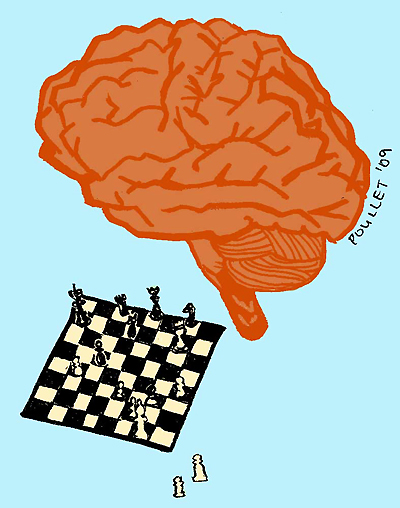Paperback Jukebox: The Brain That Changes Itself
Alicia Barnes
“Guided by his sense of beauty, an individual transforms a fortuitous occurrence into a motif, which then assumes a permanent place in the composition of the individual’s life. Without realizing it, the individual composes his life according to the laws of beauty even in times of great distress. It is wrong, then, to chide the novel for being fascinated for mysterious coincidences, but it is right to chide men for being blind to such coincidences in his daily life. For he thereby deprives his life of a dimension of beauty.” ~ Milan Kundera, The Unbearable Lightness of Being
I’ve come to understand from reading The Brain That Changes Itself by Norman Doidge that there is good news and bad news when it comes to neuroscientific study; the bad news is that we’ll probably never completely understand the intricacies of our own brains. The good news is that anyone who at least tries to understand is making their own brain stronger and healthier by building hundreds of new neuronal connections!
I recently stepped out of my reading comfort zone and experimented with a new genre: scientific nonfiction. The Brain That Changes Itself begins with the premise that for many years, scientists believed that the brain’s functions were localized and immutable: that each area is specifically designed to execute only one task. Doidge, through his profiles of eccentric scientists and personal stories of their patients, dismisses the idea of a fixed brain map and instead proves the theory of neuroplasticity—moving through different areas of neuroscientific research from stroke research to psychotherapy.

Although this wasn’t my normal fare, I found it to be a really fascinating book full of interesting explanations of how our brains work and it also had some really insightful and moving stories. One of the most startling and riveting testaments to the flexibility and mutability of our brains is the story of Michelle Mack, who was born with only half of a brain, because of what doctors believe was a blocked artery that occurred while she was still in the womb. Although her entire left hemisphere never developed, she is for the most part, a healthy and competent person, because her brain had time to adjust to its limitations. Also amazingly (and reassuringly), if one part of the brain is damaged later in life, there are ways we can train it to utilize other neuronal pathways and still retain normal functioning. Much like when a main bridge is down, we can often find back roads to get us where we want to go; it just may take a bit longer.
One chapter speaks to the power of imagination in brain development, like the discovery that mental practice (such as imagining playing the notes on a piano) can have nearly similar results as physical practice. To prove how important this kind of training can be, he relates the story of a political prisoner who kept insanity at bay through many years of solitary confinement simply by playing games of chess in his head.
But it turns out the plasticity of our brains can have drawbacks as well. In what Doidge calls the ‘plastic paradox,’ he points out that just as our mind can be amazingly flexible, it also has the potential to be incredibly rigid. He compares the way our brains develop neuronal connections to a day of sledding. At first, we can choose to go anywhere on the hill, but as the day goes on and we keep going down over and over again, we’ll find ourselves repeatedly going down the same track. This notion, that our mind gets into ruts, explains conditions like OCD, or phenomena like phantom limbs, or even depression.
This book was especially resonant to me, because the fact that we have recurring motifs at all has always been a major motif with me. I’m fascinated that minds seem to operate as sieves: that much of our experiences we forget, but what we do remember becomes imbedded and referred to often. By the time we are grown, our minds are unique machines-- taught to register the experiences that feed this existing schema and disregard many of the others.
This book made me very appreciative of my brain. It made me want to take care of it-- to keep it healthy by teaching it new things and reinforcing good habits, rather than bad ones. It also made me want to keep writing and making the search for the beauty in daily life a habit. And while this little tryst with science nonfiction has been fun, I think I’ll also return to my habit of reading novels, because they help me keep the habit of seeing the world the way I want to see it—to compose my life according to the laws of beauty. I think Norman Doidge would understand.
Alicia Barnes lives in Pittsburgh. She runs, reads, and rouses rabbles.
